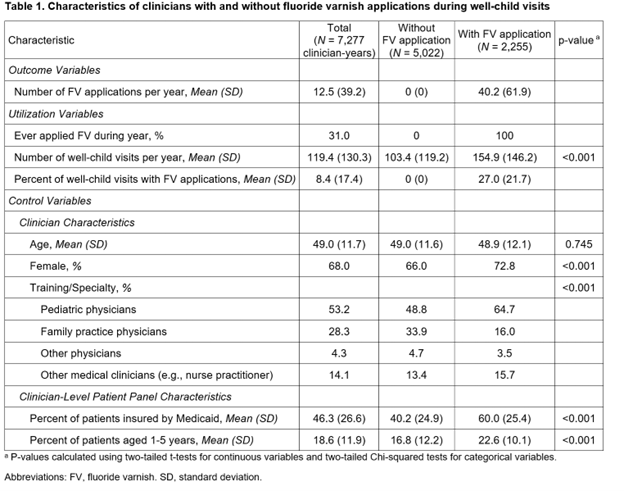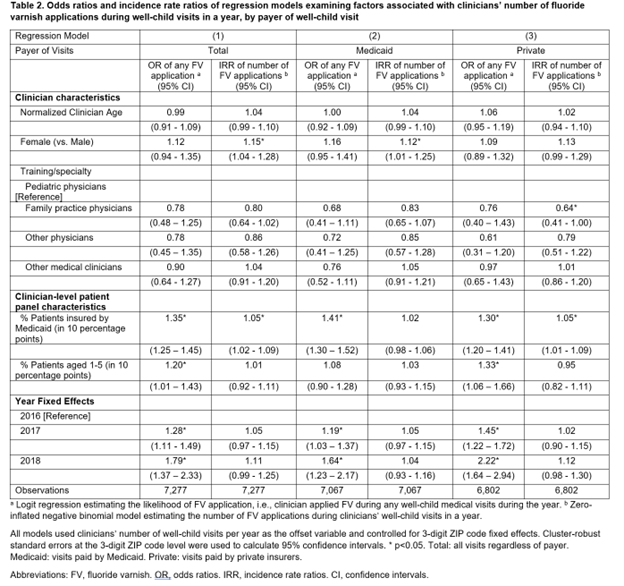Health Services Research
HSR 2: Clinical Explorations, Associations, and Interventions
589 - Clinician Characteristics Associated with Fluoride Varnish Applications During Well-Child Visits
Publication Number: 589.223
- KL
Kun Li (she/her/hers)
PhD Candidate
George Washington University
Washington, District of Columbia, United States
Presenting Author(s)
Background: The US Preventive Services Task Force recommends that primary care clinicians apply fluoride varnish to the teeth of all children aged 5 years and younger during pediatric well-child visits. Fluoride varnish applied in medical offices may help to increase children’s receipt of preventive oral health services and reduce tooth decay because children are more likely to receive medical care than dental care. Despite clinical recommendations and coverage for this service by both public and private insurers, few medical clinicians apply fluoride varnish to most of their patients during well-child visits.
Objective: To identify factors associated with clinicians’ likelihood and intensity of applying fluoride varnish during well-child visits.
Design/Methods: Using Massachusetts All-Payers Claims data (2016-2018), we conducted a cross-sectional study of clinicians providing well-child visits to children aged 1-5. We used zero-inflated negative binomial regressions to estimate the probability of a clinician applying fluoride varnish and the percentage of visits with fluoride varnish, overall and separately for visits paid by Medicaid and private insurers, controlling for variables listed in Table 1.
Results:
Among 7,277 clinician-years, 31% applied fluoride varnish at least once and an average of 8.4% of a clinician’s visits included this service (Table 1). A clinician’s likelihood of applying fluoride varnish was positively associated with having more patients insured by Medicaid (OR=1.35, 95% CI=1.25-1.45) and more patients aged 1-5 years old (OR=1.20, 95% CI=1.01-1.43). Additionally, having more patients insured by Medicaid was associated with higher expected number of fluoride varnish applications overall (IRR=1.05, 95% CI=1.01-1.09) (Table 2). When examining the share of a clinician’s patients insured by Medicaid at the 25th, 50th, and 75th percentiles, the predicted fluoride varnish applications per 100 visits was 3.5, 6.3, and 11.2 (Figure). These associations were also observed among visits paid by private insurers (Table 2). Compared with pediatricians, family practice physicians had a lower expected number of fluoride varnish applications per year for privately paid visits (IRR=0.64, 95% CI=0.41-1.00), with no association observed for visits paid by Medicaid.
Conclusion(s): Despite clinical recommendations and insurance coverage, the likelihood and intensity of fluoride varnish applications during well-child visits remained low for most medical clinicians. Varying practice patterns indicate the necessity of targeted interventions for promoting the provision of fluoride varnish.

.png)
